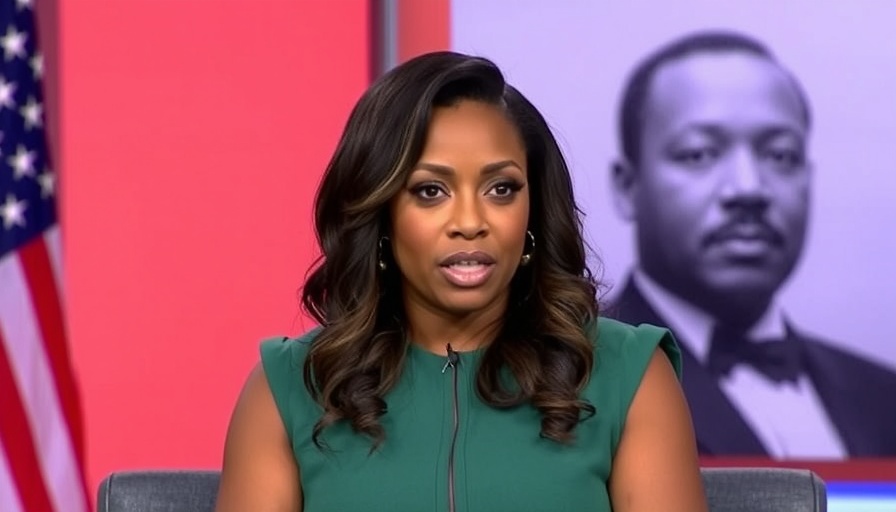
Jemele Hill’s Provocative Parallel: Trans Rights and Civil Rights
In a recent media appearance, Jemele Hill made headlines by drawing a striking parallel between the transgender rights movement and the civil rights movement led by Dr. Martin Luther King Jr. Her comments have sparked considerable debate, with supporters and critics weighing in on the appropriateness of such comparisons. Hill posits that just as MLK was once viewed as a threat to societal norms, so too are transgender activists facing similar challenges today. This analogy raises fundamental questions about societal progress and how we address human rights issues.
The Legacy of Martin Luther King Jr.
To understand Hill's comparison, one must revisit the legacy of Dr. MLK. During his time, King was often labeled a radical and a threat to American values—an indictment often seen in those fighting for marginalized groups today, including the LGBTQ+ community. Dr. King's vision of equality and justice resonates with many activists advocating for transgender rights, showcasing a pattern of resistance against change within societal structures. The slow yet transformative journey towards civil rights for African Americans serves as a historical backdrop for current struggles faced by transgender individuals.
Examining the Social Implications of Hill’s Viewpoint
When Hill states, "the majority used to believe that Dr. MLK Jr. was somebody who was a threat," she invites us to ponder how perceptions shift over time. This notion resonates deeply in contemporary America as the ongoing discussions about gender identity and expression continue to evoke strong reactions. In a nation where changing demographics and cultural attitudes are at play, understanding the implications of such comparisons is crucial. Many argue that equating the transgender experience with the civil rights movement elevates LGBTQ+ rights, while others caution against oversimplifying both narratives.
Contextualizing Current Events Through Hill’s Lens
The conversation around transgender rights remains highly charged, highlighted by recent legislative efforts in various states that seek to limit the rights and freedoms of transgender individuals. Identifying parallels with the civil rights movement not only highlights historical injustices faced by both communities but underscores the ongoing fight against systemic discrimination. As reported in various news outlets, movements like Black Lives Matter emphasize that struggles against oppression often intersect, paving the way for broader coalitions across causes.
Exploring Diverse Perspectives on Social Change
Critics of Hill's analogy argue that while the struggles for civil rights and LGBTQ+ rights both seek to dismantle societal inequities, the historical contexts and societal responses vary significantly. The civil rights movement of the 1960s faced distinct forms of oppression that, while harsh, differ from contemporary battles over identity. This perspective invites a critical examination of how societal narratives shape our understanding of justice, equality, and human rights across different movements.
Looking Ahead: The Future of Civil Rights in the U.S.
Looking at Hill’s argument through a forward-thinking lens, one can consider how this discussion could reshape the future of civil rights advocacy. As the landscape of public discourse evolves, uniting various causes may empower marginalized communities to challenge outdated norms and institutional policies. If the transgender rights movement can draw upon the successes of the civil rights movement, it may foster a more inclusive dialogue around equality that benefits all disenfranchised groups.
Deciphering the Importance of Dialogue in Social Movements
As we engage with these critical discussions, it's essential that we approach them with nuance. The power of the media to shape public opinion about social movements cannot be overstated. By enhancing understanding and fostering respectful dialogue, individuals may begin to bridge the gaps that divide various activist causes, such as those mentioned by Hill.
As tensions rise and discussions evolve, Hill’s comparison serves as a significant touchpoint for ongoing social debates regarding the intersectionality of rights movements today. We are challenged not only to reflect on past injustices but to commit to a future where all voices are heard, and dignity is preserved for every individual.
In light of these conversations surrounding civil rights strikes a chord across the political spectrum, we must urge policy makers and citizens alike to engage in supportive advocacy. Grounding such advocacy in empathy and understanding may well signal a new era of solidarity among marginalized communities.
 Add Element
Add Element  Add Row
Add Row 



Write A Comment